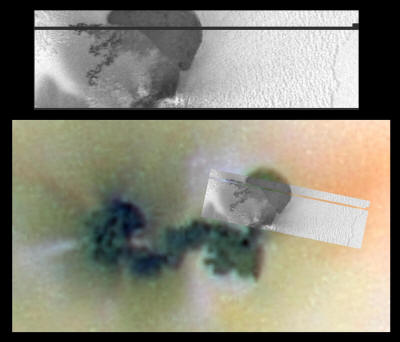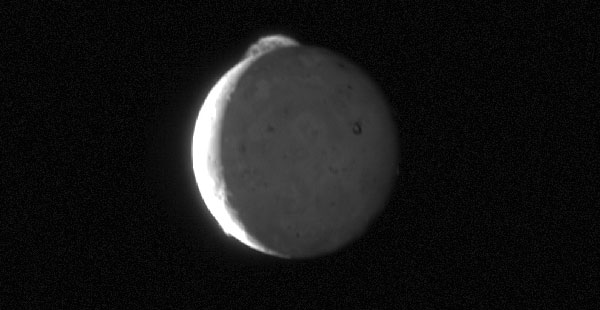|

by Stephen Smith
May 28, 2010
from
Thunderbolts Website

Plasma streamers
connect Jupiter with its moon Io.
Io has puzzled planetary scientists for
years. Electric Universe advocates are not so mystified.
The
Galileo spacecraft was launched
October 18, 1989 aboard the Atlantis space shuttle. Just as the
Cassini mission's images and data
analysis are providing substantial evidence for the Electric
Universe hypothesis, Galileo performed the same service while
exploring Jupiter and its family of 63 known satellites.
Galileo's power supply consisted of twin Plutonium-238 reactors that
used the heat from radioactive decay to power its instruments.
On September 21, 2003 the spacecraft was
incinerated when it was deliberately sent into Jupiter's vast
maelstrom so that it would not contaminate any of the moons,
especially Europa.
Since the two Voyager space probes discovered "surprising volcanic
activity" on Io, plasma physicist
Wal Thornhill
predicted that the plumes erupting from the so-called
"volcanic vents" would be hotter than any lava fields ever measured.
His prediction was confirmed when it was found that the "caldera"
around the vents exceeded temperatures of 2000 Celsius.
Io orbits close in to Jupiter, so intense electromagnetic radiation
bombards its surface, removing approximately one ton per second in
gases and other materials. Io acts like an electrical generator as
it travels through Jupiter’s plasmasphere, inducing over 400,000
volts across its diameter at more than three million amperes. That
tremendous current flows across its magnetic field into the electric
environment of Jupiter.
The plumes seen erupting from Io are the result of cathode arcs,
electrically etching the surface and blasting sulfur dioxide "snow"
up to 150 kilometers into space.
As Thornhill predicted, the most active regions of electric
discharge were found to be along the edges of so-called "lava
lakes,” while the remainder of the dark umbras surrounding them were
extremely cold.
No volcanic vents were found. Instead,
what was discovered is that the plumes move across Io, as
illustrated by the Prometheus (below image) hot spot that moved more
than 80 kilometers since it was first imaged by Voyager 2.

Galileo mission specialists were shocked
when they realized that the volcanic plumes also emit ultraviolet
light, characteristic of electric arcs.
Electric discharges can accelerate material to high velocity,
producing uniform trajectories that then deposit it at a uniform
distance.
This explains why there are rings around
the various caldera. Cathode erosion of Io also provides a reason
why the plumes seen highlighted against the black of space possess a
filamentary structure, reminiscent of
Birkeland currents that have been
discussed many times in these pages.
The Tvashtar "volcano" (click below image) near the north pole of
Io, was seen by the
New Horizons probe to be shooting a
plume more than 290 kilometers above the surface.

A NASA press release from that time
reported that,
"...the remarkable filamentary
structure in the Tvashtar plume is similar to details glimpsed
faintly in 1979 Voyager images of a similar plume produced by
Io's volcano Pele (below image).
However, no previous image by any
spacecraft has shown these mysterious structures so clearly."

It appears that the electrical circuit
on Io is concentrating Jupiter's current flow into several "plasma
guns" (below image), or dense plasma foci, as noted plasma physicist
Anthony Peratt
observed more than twenty years ago.

"Tidal kneading" of Io is not the
cause of its heat: Io is not being heated from within by
friction.
The most probable cause, based on
observational evidence and laboratory analysis, is that Io is
receiving an electrical input from Jupiter that is heating it up
through electromagnetic induction.
|





